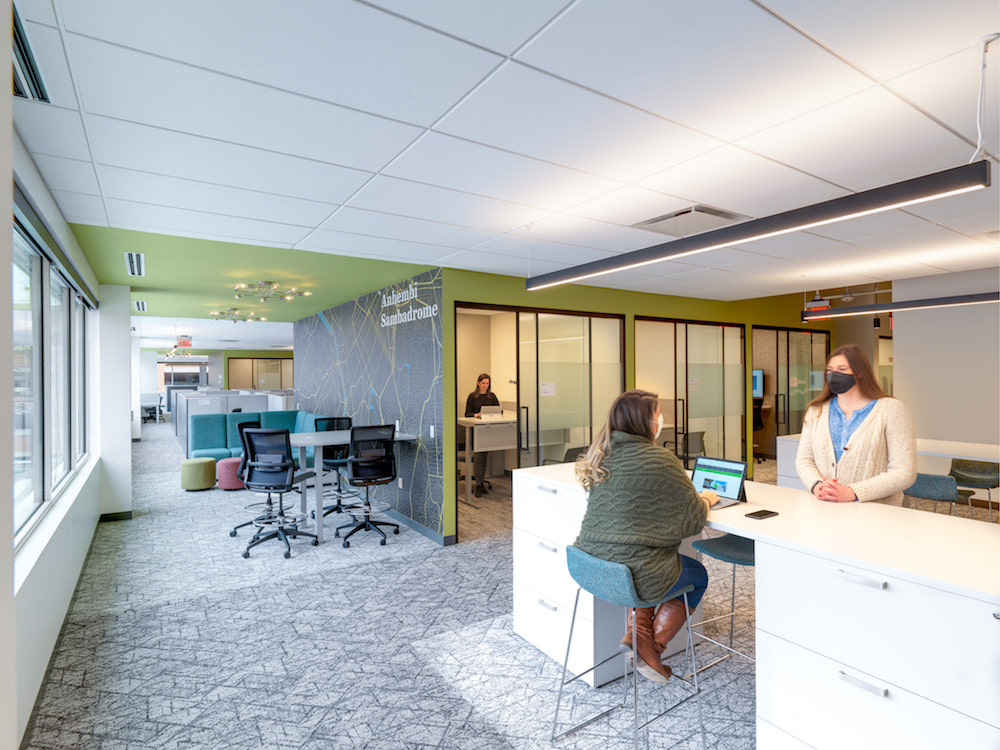Dyer Brown’s Rachel Woodhouse explore why change management guidance is so important for the growth of small to midsize companies.

Uncertainty about the texture of the coming post-COVID era presents challenges for many organizations, but uncertainty is not new. Turn back the clock two years and any mid-size company facing a workplace realignment task would still be wading through a complex field of seemingly contradictory trends and buzzwords. The ones who find their footing during a transition are always those who made creating a robust communications strategy an integral part of the process, ensuring that everyone at every level in the organization would be able to adapt quickly and comfortably.
Change management is of particular importance for growing small to midsize companies. Startups and small firms typically don’t have major issues around communications, and major global brands have long ago settled on internal methods that work well for them. But companies of a certain size, starting around 100 employees, are usually big enough they will need a well-defined communications strategy to smooth out the transition – and small enough that they may not be thinking about change management at all.

What many of these employers are learning is that the same design experts they plan to collaborate with on a major workplace update may also be their best asset for managing the transition. Many design firms are now offering change management consultation as an add-on service, guiding executives, management, and human resources personnel to craft and implement effective communications on everything from optimal use of the new workplace to supporting employee wellness, to successfully adapting to in-person modes after months of working remotely.
By weaving change management into the fabric of a project, ideally from the earliest stages, the right design firm can help clients achieve optimal results when rolling out updated office standards or a new headquarters, for both the employers and employees. Naturally many corporate leaders hesitate to outsource what they see as internal communications to hired consultants, especially when those firms are best known for design, architecture, graphics, and branding. In fact, many of these organizations discover that the outside perspective is exactly what they need.

Avoiding the workplace “quicksand”
The goal of change management is to protect the investment made in transitioning to a new mode. Proper support for a real estate strategy through a robust communications plan helps avoid unforeseen organizational implications that can quickly add up to big money. Failure to manage change effectively can result in having to lease additional space, loss of productivity when employees feel overwhelmed, or attrition among valued management-level talent. The latter is especially important: In the post-COVID economy, employees at most levels have more job options, which puts them in the driver’s seat. Mismanage a major transition and the frustration level for high-value staffers may be more than they care to endure.

These issues are like quicksand: easy to fall into, and a nightmare to try to dig yourself out of. Small companies can avoid these traps with a few all-hands meetings, and large organizations can tap their in-house human resources department. The mid-size company, faced with the unfamiliar challenge of a major workplace strategy rollout, probably needs outside help. Since many such companies are already working with a design consultant, bringing them on as integrated designer-strategists just makes sense since they are well-positioned to troubleshoot, and spot the quicksand before anyone steps in it. Receptivity to ideas about structuring and implementing change-focused communications plans is trending upward, especially for those who connect the dots and realize the costs of not doing it may be insupportable.
We are supporting several clients who have opted to include change management among the negotiated suite of integrated workplace services. At the same time, we know that there are many who could really benefit from outside communications consulting, but aren’t yet convinced of the value proposition. In the hope that more mid-size companies will see this as the win-win (or win-win-win) scenario it is, a few key insights follow.

Begin at the beginning
The best workplace designs emerges from early, frequent engagement with the client group, especially when it involves users at every level. Likewise, the best results in change management strategy materialize when it is considered an essential organizational thread to be informed by robust pre-project visioning workshops and surveys. The information gathered can be vital to a successful communications campaign for the transition rollout.
Mission and culture rule
Whether it’s design, furniture, or a communications strategy, there is no single best approach for all companies – one size never fits all. The employer should choose the course that optimally supports workflow and plans for growth, and aligns with the company culture. The leadership with tech innovators QuickBase, for example, elected to fold change management services into their design package and opted for regular weekly meetings to develop and implement a strategy, working with the integrated services team to scrutinize announcements and release information strategically according to a predetermined schedule. By contrast, nonprofit Metro Housing chose to have the design team focus on low-profile needs like selecting user-experience software.

Focus on user experience
As mentioned, maintaining a competitive edge in recruitment and retention requires ensuring that talented employees feel valued and remain productive. Providing a seamless workplace experience is a cost-effective method of contributing to on-the-job satisfaction. As an example, selecting the optimal workplace management software suite paid dividends for both QuickBase and Metro Housing. For QuickBase in particular the selection fostered well-structured top-down communication from leadership, averting “quicksand” situations where managers were caught off guard by unexpected policy changes.
Integrated services mean value
The design team’s goal is to create an environment that supports employee comfort, wellbeing, and productivity, and change management is a natural extension of that mission. If a company has already engaged designers to consult on a major workplace update, they should consider the potential value to be mined from the many change-related insights these acknowledged experts are able to collect and assess. And as outsiders a design team views the client organization dispassionately, making them perfectly placed to lead communications and transparency efforts.
It’s worth reiterating that there is no single change management solution or package. Experiences vary considerably from client to client, with design firms providing an informal advisory role for some while working hand-in-glove on a highly structured rollout with others. There’s an entire spectrum in between. A mid-size company moving toward its first major workplace changeover should definitely consider integrated communications consulting, and work with the designers to arrive at a solution that suits their organization best. Neglecting the opportunity to at least discuss could mean risking a costly dip in the quicksand.

